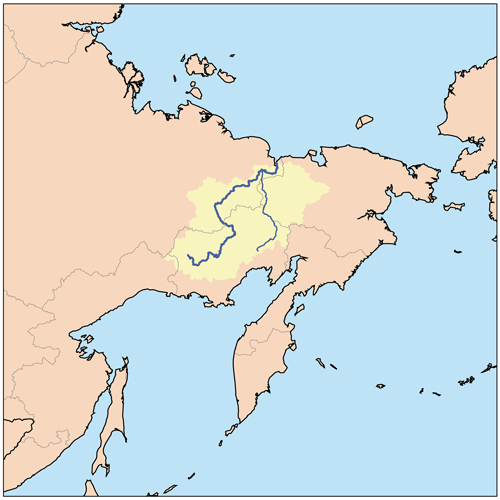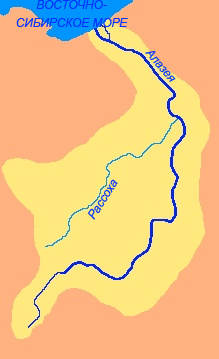|
Longnose Sucker
The longnose sucker (''Catostomus catostomus'') is a species of cypriniform freshwater fish in the family Catostomidae. It is native to North America from the northern United States to the top of the continent. It is also found in Russia in rivers of eastern Siberia, and thus one of only two species of sucker native to Asia (the other is the Chinese '' Myxocyprinus asiaticus''). Description The body of the longnose sucker is long and round with dark olive or grey sides and top and a light underside. They are up to in total length and weigh up to . Longnose suckers are easily confused with white suckers (''Catostomus commersoni''), which appear very similar. However, longnose suckers can be distinguished by their comparatively finer scales. Distribution and ecology The longnose sucker inhabits cold, clear waters, including lakes, pools, rivers and streams, and occasionally also brackish waters. In North America, it ranges north from the Columbia, Delaware, Missouri and ... [...More Info...] [...Related Items...] OR: [Wikipedia] [Google] [Baidu] |
Johann Reinhold Forster
Johann Reinhold Forster (22 October 1729 – 9 December 1798) was a German Reformed (Calvinist) pastor and naturalist of partially Scottish descent who made contributions to the early ornithology of Europe and North America. He is best known as the naturalist on James Cook's second Pacific voyage, where he was accompanied by his son Georg Forster. These expeditions promoted the career of Johann Reinhold Forster and the findings became the bedrock of colonial professionalism and helped set the stage for the future development of anthropology and ethnology. They also laid the framework for general concern about the impact that alteration of the physical environment for European economic expansion would have on exotic societies. Biography Forster's family originated in the Lords Forrester in Scotland from where his great-grandfather had emigrated after losing most of his property during the rule of Oliver Cromwell along with many other Scots. Forster himself was born in the c ... [...More Info...] [...Related Items...] OR: [Wikipedia] [Google] [Baidu] |
Myxocyprinus Asiaticus
The Chinese high-fin banded shark (''Myxocyprinus asiaticus'') is a popular freshwater aquarium fish retrieved on: August 21, 2007 that belongs to the family Catostomidae. It grows to about long and is unsuitable for most home aquariums.SeriouslyFish: Myxocyprinus asiaticus '' Retrieved 9 May 2013 retrieved on: August 21, 2007. In addition to Chinese high-fin banded shark, it is also known under many o ... [...More Info...] [...Related Items...] OR: [Wikipedia] [Google] [Baidu] |
Aquatic Plants
Aquatic plants are plants that have adapted to living in aquatic environments ( saltwater or freshwater). They are also referred to as hydrophytes or macrophytes to distinguish them from algae and other microphytes. A macrophyte is a plant that grows in or near water and is either emergent, submergent, or floating. In lakes and rivers macrophytes provide cover for fish, substrate for aquatic invertebrates, produce oxygen, and act as food for some fish and wildlife. Macrophytes are primary producers and are the basis of the food web for many organisms. They have a significant effect on soil chemistry and light levels as they slow down the flow of water and capture pollutants and trap sediments. Excess sediment will settle into the benthos aided by the reduction of flow rates caused by the presence of plant stems, leaves and roots. Some plants have the capability of absorbing pollutants into their tissue. Seaweeds are multicellular marine algae and, although their ecologic ... [...More Info...] [...Related Items...] OR: [Wikipedia] [Google] [Baidu] |
Kolyma
Kolyma (russian: Колыма́, ) is a region located in the Russian Far East. It is bounded to the north by the East Siberian Sea and the Arctic Ocean, and by the Sea of Okhotsk to the south. The region gets its name from the Kolyma River and mountain system, parts of which were not accurately mapped by Russian surveyors until 1926. Today the region consists roughly of the Chukotka Autonomous Okrug and the Magadan Oblast. The area, part of which is within the Arctic Circle, has a subarctic climate with very cold winters lasting up to six months of the year. Permafrost and tundra cover a large part of the region. Average winter temperatures range from (even lower in the interior), and average summer temperatures, from . There are rich reserves of gold, silver, tin, tungsten, mercury, copper, antimony, coal, oil, and peat. Twenty-nine zones of possible oil and gas accumulation have been identified in the Sea of Okhotsk shelf. Total reserves are estimated at 3.5 b ... [...More Info...] [...Related Items...] OR: [Wikipedia] [Google] [Baidu] |
Alazeya
The Alazeya ( rus, Алазея, r=; sah, Алаһыай, translit=Alahıay) is a river in the northeastern part of Sakha Republic, Yakutia, Russia which flows into the Arctic between the basins of the larger Indigirka to the west and the Kolyma River, Kolyma to the east. Mount Kisilyakh-Tas is a notable kigilyakh site on the right bank of the Alazeya River at . Geography The river is long. The area of its Drainage basin, basin is . The Alazeya is formed at the confluence of the Nelkan and Kadylchan rivers in the slopes of the Alazeya Plateau. It crosses roughly northwards through the tundra meandering among the flat, marshy areas of the Kolyma Lowland, part of the greater East Siberian Lowland. Finally the Alazeya drains into the Kolyma Bay of the East Siberian Sea, close to Logashkino. The river freezes in late September through early October and stays icebound until late May through early June. There are more than 24,000 lakes in its basin.Google Earth [...More Info...] [...Related Items...] OR: [Wikipedia] [Google] [Baidu] |
Indigirka
The Indigirka ( rus, Индиги́рка, r=; sah, Индигиир, translit=Indigiir) is a river in the Sakha Republic in Russia between the Yana to the west and the Kolyma to the east. It is long. The area of its basin is . History The isolated village of Russkoye Ustye, located on the delta of the Indigirka, is known for the unique traditional culture of the Russian settlers whose ancestors came there several centuries ago. Some historians have speculated that Russkoye Ustye was settled by Pomors in the early 17th century. In 1638 explorer Ivan Rebrov reached the Indigirka. In 1636–42 Elisei Buza pioneered the overland route to the Indigirka river system. At about the same time, Poznik Ivanov ascended a tributary of the lower Lena, crossed the Verkhoyansk Range to the upper Yana, and then crossed the Chersky Range to the Indigirka. In 1642 Mikhail Stadukhin reached the Indigirka overland from the Lena. Zashiversk on the Indigirka was an important colonial outpo ... [...More Info...] [...Related Items...] OR: [Wikipedia] [Google] [Baidu] |
Yana (river)
The Yana ( rus, Я́на, p=ˈjanə; sah, Дьааҥы, ''Caañı'') is a river in Sakha in Russia, located between the Lena to the west and the Indigirka to the east. Course It is long, and its drainage basin covers . Including its longest source river, the Sartang, it is long. Its annual discharge totals approximately . Most of this discharge occurs in May and June as the ice on the river breaks up. The Yana freezes up on the surface in October and stays under the ice until late May or early June. In the Verkhoyansk area, it stays frozen to the bottom for 70 to 110 days, and partly frozen for 220 days of the year. The river begins at the confluence of the rivers Sartang and Dulgalakh in the Yana-Oymyakon Highlands. It flows north across the vast Yana-Indigirka Lowland, part of the greater East Siberian Lowland, shared with the Indigirka to the east. As the river flows into the Yana Bay of the Laptev Sea, it forms a huge river delta covering . [...More Info...] [...Related Items...] OR: [Wikipedia] [Google] [Baidu] |
Great Lakes
The Great Lakes, also called the Great Lakes of North America, are a series of large interconnected freshwater lakes in the mid-east region of North America that connect to the Atlantic Ocean via the Saint Lawrence River. There are five lakes, which are Superior, Michigan, Huron, Erie, and Ontario and are in general on or near the Canada–United States border. Hydrologically, lakes Michigan and Huron are a single body joined at the Straits of Mackinac. The Great Lakes Waterway enables modern travel and shipping by water among the lakes. The Great Lakes are the largest group of freshwater lakes on Earth by total area and are second-largest by total volume, containing 21% of the world's surface fresh water by volume. The total surface is , and the total volume (measured at the low water datum) is , slightly less than the volume of Lake Baikal (, 22–23% of the world's surface fresh water). Because of their sea-like characteristics, such as rolling waves, sustained w ... [...More Info...] [...Related Items...] OR: [Wikipedia] [Google] [Baidu] |
Monongahela River
The Monongahela River ( , )—often referred to locally as the Mon ()—is a U.S. Geological Survey. National Hydrography Dataset high-resolution flowline dataThe National Map accessed August 15, 2011 river on the Allegheny Plateau in north-central West Virginia and Southwestern Pennsylvania. The river flows from the confluence of its west and east forks in north-central West Virginia northeasterly into southwestern Pennsylvania, then northerly to Pittsburgh and its confluence with the Allegheny River to form the Ohio River. The river's entire length is navigable via a series of locks and dams. Etymology The Unami word ''Monongahela'' means "falling banks", in reference to the geological instability of the river's banks. Moravian missionary David Zeisberger (1721–1808) gave this account of the naming: "In the Indian tongue the name of this river was ''Mechmenawungihilla'' (alternatively spelled ''Menawngihella''), which signifies a high bank, which is ever washed out a ... [...More Info...] [...Related Items...] OR: [Wikipedia] [Google] [Baidu] |
Delaware River
The Delaware River is a major river in the Mid-Atlantic (United States), Mid-Atlantic region of the United States. From the meeting of its branches in Hancock (village), New York, Hancock, New York, the river flows for along the borders of New York (state), New York, Pennsylvania, New Jersey, and Delaware, before emptying into Delaware Bay. It is the longest free-flowing river in the Eastern United States. The river has been recognized by the National Wildlife Federation as one of the country's Great Waters. The river's drainage basin, watershed drains an area of and provides drinking water for 17 million people. The river has two branches that rise in the Catskill Mountains of New York: the West Branch Delaware River, West Branch at Mount Jefferson (New York), Mount Jefferson in Jefferson, New York, Jefferson, Schoharie County, New York, Schoharie County, and the East Branch Delaware River, East Branch at Grand Gorge, New York, Grand Gorge, Delaware County, New York, ... [...More Info...] [...Related Items...] OR: [Wikipedia] [Google] [Baidu] |
Columbia River
The Columbia River ( Upper Chinook: ' or '; Sahaptin: ''Nch’i-Wàna'' or ''Nchi wana''; Sinixt dialect'' '') is the largest river in the Pacific Northwest region of North America. The river rises in the Rocky Mountains of British Columbia, Canada. It flows northwest and then south into the U.S. state of Washington, then turns west to form most of the border between Washington and the state of Oregon before emptying into the Pacific Ocean. The river is long, and its largest tributary is the Snake River. Its drainage basin is roughly the size of France and extends into seven US states and a Canadian province. The fourth-largest river in the United States by volume, the Columbia has the greatest flow of any North American river entering the Pacific. The Columbia has the 36th greatest discharge of any river in the world. The Columbia and its tributaries have been central to the region's culture and economy for thousands of years. They have been used for transportat ... [...More Info...] [...Related Items...] OR: [Wikipedia] [Google] [Baidu] |






